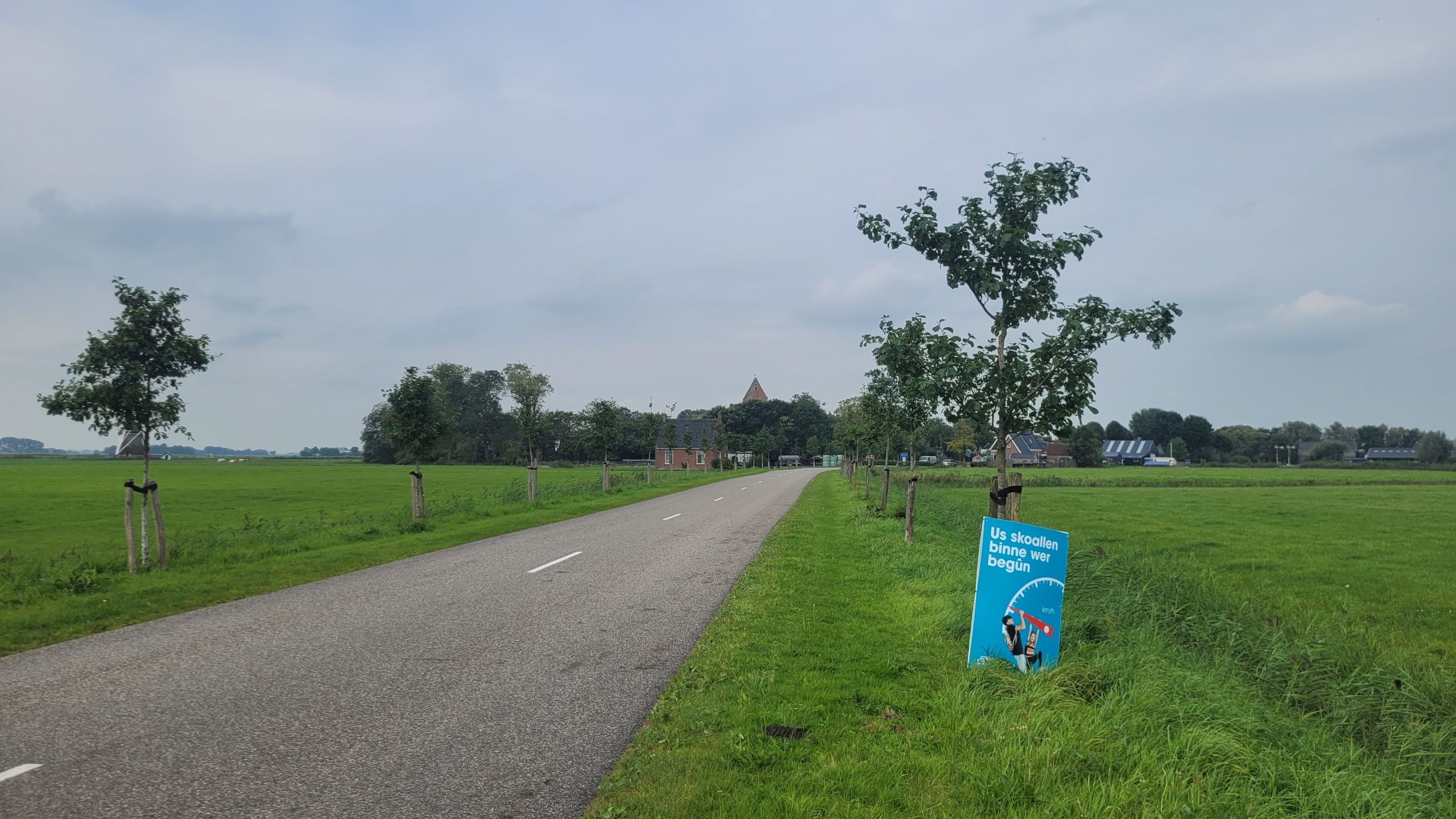After two years in Paris working for the International Transport Forum at the OECD, my family and I recently moved to a small village in the province of Fryslân in the Netherlands.
The contrast between one of the world’s biggest urban agglomerations and our tiny village of 200 is obvious.
But I wasn’t prepared for the difference in transport infrastructure, especially given that the Netherlands has put enormous efforts into making roads safer for cyclists, pedestrians and other vulnerable road users.
It seems that the distribution of this effort has been uneven. A case in point: the road running through the village where we live has become a local “rat run” (i.e. a short cut used by through traffic seeking the fastest route).
The speed limit on the road in the photo below is 80km/h: a speed that, on other roads, means that cyclists and pedestrians are prohibited. And yet here, drivers regularly exceed even this limit both on their approach to and departure from the village (where a 30 km/h speed limit is routinely ignored).
Despite longstanding plans by Gemeente Noardeast-Fryslân to build a bypass, the traffic situation in the village is dangerous for anyone not in a car, tractor, truck or light commercial vehicle. As the Gemeente admits on its own website: “The patience of the inhabitants … has been put to the test for too long.”
In this context, the driver education campaign featured in this photo is laughable at best — and, at worst, fatal. The text of the sign translates roughly as “School is about to begin again” and sits above an image of two school children hanging off a speedometer.
What is the actual message here? Slow down? If so, by how much? And why?

Yesterday, I rode our two sons home from school along this stretch of road. The older boy was on his own bike, the younger on the back of mine. Just before this sign, we were forced off the road by a driver who had swerved into our lane, accelerating out of the village.
I could see they had their head down, probably using a phone. Completely oblivious. Secure in their miniature safe world. Confident that they would never be held to account. Driving in the middle of the oncoming lane.
If we had been riding “Dutch” style (i.e. two abreast) my son and I would have been struck and killed. Only the fact that I had impressed on our older son the need for him to stick to the right saved him from a similar fate.
The lesson was clear: nobody will slow down for us, school vacation or not. The needs of some road users have been prioritised over others and this will continue, even if the bypass is built. It is safer to drive your children to school than to risk them being run over.
I spent two years at the ITF editing reports on road safety. I now have the uncomfortable feeling that reports, campaigns (and blog posts!) are largely useless. How can I protect my children from the kindermoordenaars who continue to move freely in this society?
Crossposted on LinkedIn.

![[d/dn]](https://i0.wp.com/daveydreamnation.com/wp-content/uploads/2024/09/oie_l521ir34eJuC.png?fit=136%2C116&ssl=1)

Reply